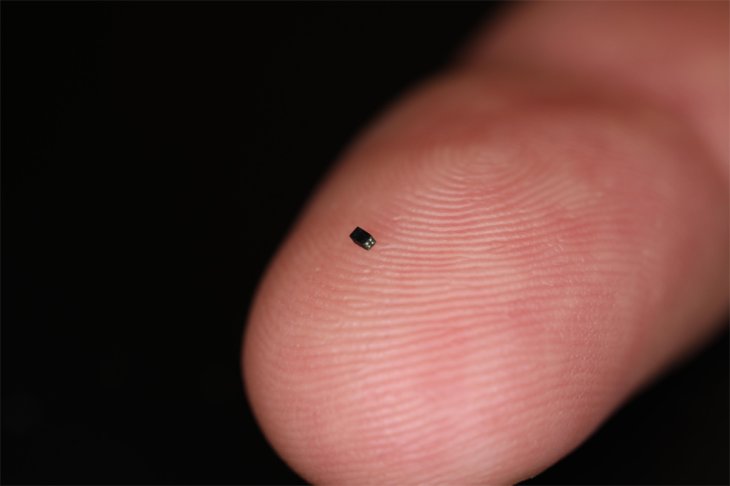This Camera Sensor Is As Small As A Grain Of Sand
Harin - Nov 06, 2019

OmniVision from California has developed a camera that has received a Guinness World Record as the “Smallest Commercially Available Image Sensor.”
- Top 5 Budget Cameras For Beginners (2025)
- This 3200MP Camera Takes Photos That Require 400 4K TVs To Be Fully Displayed
- The 34kg-Camera Used For Aerial Shooting During World War II
With every year passing, the power of today's smartphones’ cameras is getting better. Some cameras can even shoot photos that seem like they were shot on a DSLR.
Now researchers have just developed the smallest camera in the world with the size of a grain of sand, taking capturing pictures and videos to a whole new level.
The camera is from a company called OmniVision from California. The dimensions of the camera are 0.575x0.575x0.232mm. OmniVision’s camera has received a Guinness World Record as the “Smallest Commercially Available Image Sensor.”

With an RGB Bayer chip, the sensor can take color images with 40,000 pixels. The camera also comes with a 1/36-inch optical format to capture videos at 30fps with 200x200 pixels resolution.
The size of the sensor might be small but it doesn’t mean the camera lacks performance as it can take pretty good pictures in low-light environments. The sensor can take images at a 120 angle and its depth of field can reach 30mm. According to the company’s claim, this is the only tiny chip-on-chip camera supporting backside illumination.
You might think where this small camera can be used. First and foremost, the camera could create a revolution in the medical fields like helping with catheters and endoscopies processes. The smaller camera can make the experience more comfortable for both the doctors and the patients. OmniVision says that the camera can also be used in other fields, as a spy equipment or a wearable, etc.
A post on the website of the company read:

OmniVision is not the only one who tries to create a smaller camera. University of Utah engineers also developed a camera lens which is extremely thin (thinner than a human’s hair). While the normal lenses have a curved surface, the glass of this lens is flat.
A conventional lens captures the light of the object. The light is then bent before reaching the sensor. But with the new lens, the light is directly bent at the sensor, using microstructures.
Featured Stories

Gadgets - Jul 21, 2025
COLORFUL Launches iGame Shadow II DDR5 Memory for AMD Ryzen 9000 Series

Gadgets - Jun 23, 2025
COLORFUL SMART 900 AI Mini PC: Compact Power for Content Creation

Review - Jun 18, 2025
Nintendo Switch 2 Review: A Triumphant Evolution Worth the Wait

Gadgets - Jun 18, 2025
Starlink: Why It’s a Big Deal for U.S. Internet in 2025

Gadgets - Jun 17, 2025
How Custom PC Setups Support India's Esports Athletes in Global Competition

Gadgets - Jun 12, 2025
Lava Prowatch Xtreme Launches with Google Fit Integration

Gadgets - Jun 07, 2025
Fujifilm Instax Mini 41 Launches in India: Stylish Instant Camera Now Available...

Mobile - Jun 07, 2025
Realme C73 5G Launches in India: Budget 5G Phone Starts at ₹10,499

Gadgets - Jun 07, 2025
OnePlus 13s Makes Indian Debut: Compact Flagship Brings Premium Features at...

Gadgets - Jun 07, 2025
Comments
Sort by Newest | Popular